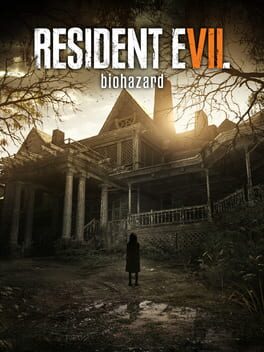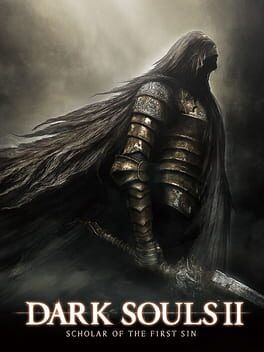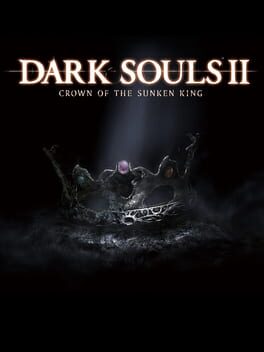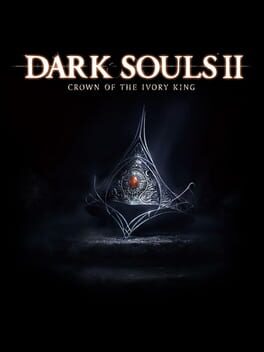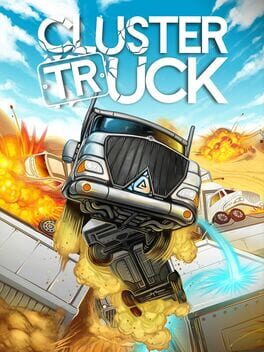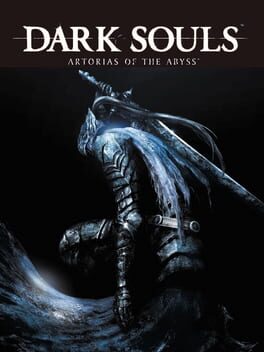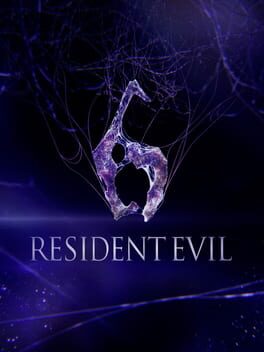Devixicus
1990
I played the earlier parts of this game many times throughout my life and found it to be fun but ultimately not worth playing through. But upon revisit on original hardware and a nice CRT, SMW's outstanding elements truly shined.
A stylish visual presentation isn't all this game has over Super Mario Bros 3; it has a completely new philosophy on exploration and secrets in a game that's still incredibly newcomer friendly and straightforward. Controls are less weighty and quicker, and the new and returning enemies perfectly compliment that new feel. I appreciated most that the game gave back however much detail I wanted to comb into the levels, to the point I found secrets in secrets in secrets... and so on.
I ended up getting 95 exits (thanks to the Forest of Illusion fortress being a one-time affair) and very much look forward to revisiting this in the future.
A stylish visual presentation isn't all this game has over Super Mario Bros 3; it has a completely new philosophy on exploration and secrets in a game that's still incredibly newcomer friendly and straightforward. Controls are less weighty and quicker, and the new and returning enemies perfectly compliment that new feel. I appreciated most that the game gave back however much detail I wanted to comb into the levels, to the point I found secrets in secrets in secrets... and so on.
I ended up getting 95 exits (thanks to the Forest of Illusion fortress being a one-time affair) and very much look forward to revisiting this in the future.
This game is often compared to Super Metroid, and while the influence is obvious I think it deserves to be viewed as it's own work with how many ideas it brought into the metroidvania genre. The greater world design and item progression are key elements of that formula, and while SotN is pretty uneven in both areas, it greatly enhances the smaller scale experience with a plethora of weapons, items, and minor upgrades all throughout the game.
The titular castle is now more than set dressing for an action platformer, and features locations you both expect to and would be suprised to see in such a grand structure. And while action combat is fairly easy (especially for the series), the feel is incredibly strong and enemies are extremely varied and fun to fight. Visuals and music are of course some of the best imaginable, and the campy voice acting is iconic from the well known opening scene to hidden encounters many players never find.
The titular castle is now more than set dressing for an action platformer, and features locations you both expect to and would be suprised to see in such a grand structure. And while action combat is fairly easy (especially for the series), the feel is incredibly strong and enemies are extremely varied and fun to fight. Visuals and music are of course some of the best imaginable, and the campy voice acting is iconic from the well known opening scene to hidden encounters many players never find.
2011
Never before or after have I had such a memorable video game experience as the first playthrough of this game. I came in after playing a bit of Bloodborne and loving Dark Souls 3 so much I beat it thrice. And in my first impressions, I was frustrated here. I didn't like the clunkier rolling and lock on mechanics, the slower flow of combat, or the tighter spaces I was forced into fighting enemies in.
But as I progressed, I found more and more I was enraptured with Lordran. It felt so effortless how it all tied itself together, and it was just as effortless for me to find my way around it. After years of scouring maps in Metroid, here I was just mindlessly connecting completely opposite locations. And it all felt so vast, like there was so much revealed every time I passed a challenging part, or even gave up and wandered elsewhere.
This game has an atmosphere unlike any other. For all the games From has made about worlds in decay and disrepair, never before have I felt so immersed in the feelings of one. Everything is so far gone that at times it feels hopeless, yet other times the natural beauty of the world shines even stronger in the serenity of society itself nearly ceasing to function. When you first find your way into a man-made place, it can hit so many different emotions. Some are just as beautiful as the world untouched, while others can horrify in how such a place ever felt just to create.
The gameplay here is a completely different beast to From's later games in this style, so I understand it's not everyone's cup of tea. Combat is measured, generally slower but usually more thoughtful as well. You have to consider your build's strengths and weaknesses in relation to your surroundings many times in finding new places. And of builds, you can specialize in just about any playstyle and find success in this game, unlike games like Bloodborne and DS3 that either restrict or weaken many approaches in favor of faster combat.
I will never forget my first time getting cursed and spending hours making hell runs trying to return myself to normal. Or my amazement at learning I went through all of Blighttown without ever seeing half of the areas I could explore at that time. There were multiple times I felt I had a good grasp on the type of locations I'd be seeing just for the rug to be pulled by the game showing me some new area I never would have imagined I would see. And I have never felt accomplishment quite like beating Smough and Ornstein for the first time.
This game is legendary for the legends you live playing it. They're experiences you can share with friends who have played and will be shocked by the many turns your journey took, and you can then show this game to others who will in turn shock you in how they play and experience it. I have journeyed through this masterpiece over 10 times now and I suspect I won't stop coming back ever.
But as I progressed, I found more and more I was enraptured with Lordran. It felt so effortless how it all tied itself together, and it was just as effortless for me to find my way around it. After years of scouring maps in Metroid, here I was just mindlessly connecting completely opposite locations. And it all felt so vast, like there was so much revealed every time I passed a challenging part, or even gave up and wandered elsewhere.
This game has an atmosphere unlike any other. For all the games From has made about worlds in decay and disrepair, never before have I felt so immersed in the feelings of one. Everything is so far gone that at times it feels hopeless, yet other times the natural beauty of the world shines even stronger in the serenity of society itself nearly ceasing to function. When you first find your way into a man-made place, it can hit so many different emotions. Some are just as beautiful as the world untouched, while others can horrify in how such a place ever felt just to create.
The gameplay here is a completely different beast to From's later games in this style, so I understand it's not everyone's cup of tea. Combat is measured, generally slower but usually more thoughtful as well. You have to consider your build's strengths and weaknesses in relation to your surroundings many times in finding new places. And of builds, you can specialize in just about any playstyle and find success in this game, unlike games like Bloodborne and DS3 that either restrict or weaken many approaches in favor of faster combat.
I will never forget my first time getting cursed and spending hours making hell runs trying to return myself to normal. Or my amazement at learning I went through all of Blighttown without ever seeing half of the areas I could explore at that time. There were multiple times I felt I had a good grasp on the type of locations I'd be seeing just for the rug to be pulled by the game showing me some new area I never would have imagined I would see. And I have never felt accomplishment quite like beating Smough and Ornstein for the first time.
This game is legendary for the legends you live playing it. They're experiences you can share with friends who have played and will be shocked by the many turns your journey took, and you can then show this game to others who will in turn shock you in how they play and experience it. I have journeyed through this masterpiece over 10 times now and I suspect I won't stop coming back ever.
It's pretty easy to see why this game got the reputation it did as a lousy sequel. Ultimately speaking, yeah it's weak. Animations, combat mechanics, visuals, music, world design, and just about everything else feel undercooked. I don't know specifics on this game's development but I have heard it was overly ambitious for the target hardware and was retooled by mashing whatever was finished together however they could in time for release.
What I will say is it's serviceable and not overall a bad time. Rather, it frontloads all the worst elements at the very beginning and for the rest of the playthrough feels alright, if a bit unceremonious. There are moments that land though, and I appreciated playing at least one more Souls game that didn't hate me for using a greatsword instead of something faster. But I wouldn't really recommend this game to many people, only those really interested in the franchise who have already played both Dark Souls and Demon's Souls.
What I will say is it's serviceable and not overall a bad time. Rather, it frontloads all the worst elements at the very beginning and for the rest of the playthrough feels alright, if a bit unceremonious. There are moments that land though, and I appreciated playing at least one more Souls game that didn't hate me for using a greatsword instead of something faster. But I wouldn't really recommend this game to many people, only those really interested in the franchise who have already played both Dark Souls and Demon's Souls.
I didn't care as much for this DLC as the others. Level design was okay but very linear even for DS2. Though it was a lot more coherent than the base game. Bosses were alright but Sir Alonne in particular felt very "teleports behind you" in terms of movement which I didn't like much. The difficulty was the highest but it didn't feel like it added much here.
This felt a bit like a proto-Dark Souls 3 in many ways. Level design, enemy placement and movesets, and branching paths all felt very familiar to me after playing later From works. Overall this was extremely refreshing in comparison to the slapdash level progression of the base game, and bosses greatly enhanced the experience as well.
Obviously to anyone who played this, Frigid Outskirts notwithstanding. Don't even bother, it's a giant empty room with annoying enemies that culminates in a repeat boss with the "now there's two of them" trope thrown in to juice the deaths in this section harder than ever before in the series. It's a middle finger to the fact that FromSoft were contractually stuck making three DLCs to the worst development disaster in their home grown franchise. Something "only Dark Souls fans would like" I guess :^)
Obviously to anyone who played this, Frigid Outskirts notwithstanding. Don't even bother, it's a giant empty room with annoying enemies that culminates in a repeat boss with the "now there's two of them" trope thrown in to juice the deaths in this section harder than ever before in the series. It's a middle finger to the fact that FromSoft were contractually stuck making three DLCs to the worst development disaster in their home grown franchise. Something "only Dark Souls fans would like" I guess :^)
While earlier Ratchet and Clank games felt like trailblazing inventions, this game is the first of many in the series to feel like a slight iteration on what came before. It comes short in presentation apparently due to troubles with getting online multiplayer done within the same release schedule as the previous game. I definitely feel for the devs and think they still released something good, but I don't think I'll be coming back to this game like the first two.
The core gameplay is solid as always, mostly comperable to R&C2. Weapons feel good to use and have some interesting effects, but definitely don't feel particularly inventive. The biggest change from 2 is a shift from a large arsenal of weapons with one upgrade each to a slim roster with five levels per weapon. Effectively you get more time with each weapon, though by the end of the game you'll have cycled in some new weapons to replace early game ones, much like R&C1. Though many of the late game weapons are recycled weapons from 2, which feel a lot more unique in comparison to such inventive weapons as a plain sniper rifle again, "light cannon" shotgun again, throw bombs for the third game in a row, et cetera.
Where this game really falls flat is level design. Nearly the entire game is structured around shooting gallery levels like Notak (Canal City), Joba (Megacorp Games), and Todano (Megacorp Armory). None ever feel as bold or memorable as Boldan or scenic like R&C1 planets. In fact Kerwan (Metropolis) and Aridia (Outpost X11) from that game return in short and ugly form. Variety in general is low with the least amount of Clank stages, unique level gimmicks, and a lack of space flight stages. Though this game does have the most robust coliseum mode thus far, which is fun.
Music takes a pretty big hit as well, with the series for the first time feeling cliche. Same goes for the story, no longer as dry or funny as the series is known for. Some jokes land but not the same as it used to be, and the general plot is much less engaging. I sill give credit in that this game has the best bosses in the series so far, especially with a final boss on par with the first game's to make up for the limp one in R&C2.
The core gameplay is solid as always, mostly comperable to R&C2. Weapons feel good to use and have some interesting effects, but definitely don't feel particularly inventive. The biggest change from 2 is a shift from a large arsenal of weapons with one upgrade each to a slim roster with five levels per weapon. Effectively you get more time with each weapon, though by the end of the game you'll have cycled in some new weapons to replace early game ones, much like R&C1. Though many of the late game weapons are recycled weapons from 2, which feel a lot more unique in comparison to such inventive weapons as a plain sniper rifle again, "light cannon" shotgun again, throw bombs for the third game in a row, et cetera.
Where this game really falls flat is level design. Nearly the entire game is structured around shooting gallery levels like Notak (Canal City), Joba (Megacorp Games), and Todano (Megacorp Armory). None ever feel as bold or memorable as Boldan or scenic like R&C1 planets. In fact Kerwan (Metropolis) and Aridia (Outpost X11) from that game return in short and ugly form. Variety in general is low with the least amount of Clank stages, unique level gimmicks, and a lack of space flight stages. Though this game does have the most robust coliseum mode thus far, which is fun.
Music takes a pretty big hit as well, with the series for the first time feeling cliche. Same goes for the story, no longer as dry or funny as the series is known for. Some jokes land but not the same as it used to be, and the general plot is much less engaging. I sill give credit in that this game has the best bosses in the series so far, especially with a final boss on par with the first game's to make up for the limp one in R&C2.
2016
Not a bad time but I don't find myself attached to this one. I think the game feel sabotaged itself with the wild view bobbing and maybe-too-generous ledge recovery. It's nice to be able to save jumps that feel lost sometimes but I never felt like my player character actually existed in the space, which is a death sentence for a 3D platformer to me.
Great base game! But as far as the "remaster" changes go, they added foliage and animations to Firelink Shrine (nice!) and did some modern FromSoft tweaks like multiplayer passwords. Past that it's all the original game's assets run through an engine with botched material lighting. Metals are all dull, stone and living things look more wet than intended, and strangely enough they decided the bonfire looked too ethereal and abstract so they put normal fire there instead. The original Dark Souls didn't look like this! If you can manage, please try to get a hold of PtDE or use a fanmade texture overhaul mod.
For their first DLC of this kind, FromSoft really hit the ground running. From the moment you are pulled in to whichever boss you beat last, it's an enrapturing ride with the most consistently good gameplay throughout Dark Souls. The spectacle, storytelling, and just general detail of everything is some of the most complete and thorough to come out of the studio. And you can really tell this was a special project to them just as Dark Souls itself was, that everything they set aside during the game's development for this got all the attention it needed to fully shine.
Despite all that, I think this DLC pushes somewhat past the capabilities of Dark Souls 1 as a gameplay system. All bosses are fast and active enough that the flaws in input handling as well as limitations of the lock on and roll mechanics provide more deaths and wasted time than usual for this game. "git gud" me all you want but 15-ish playthroughs in and I still stop short after Artorias sometimes to not have to grind so long on bosses I don't like as much as him.
And frankly the reason it's 4.5 instead of 5 stars is this game codified the "Dark Souls formula" that I feel was run into the ground. Sure it's solid, but it's not as interesting as Demon's or Dark, and I think that's generally true of later Souls games as well.
Despite all that, I think this DLC pushes somewhat past the capabilities of Dark Souls 1 as a gameplay system. All bosses are fast and active enough that the flaws in input handling as well as limitations of the lock on and roll mechanics provide more deaths and wasted time than usual for this game. "git gud" me all you want but 15-ish playthroughs in and I still stop short after Artorias sometimes to not have to grind so long on bosses I don't like as much as him.
And frankly the reason it's 4.5 instead of 5 stars is this game codified the "Dark Souls formula" that I feel was run into the ground. Sure it's solid, but it's not as interesting as Demon's or Dark, and I think that's generally true of later Souls games as well.
2000
If you're looking for Ridge Racer for 4 players, you're in luck! Otherwise 64 is probably the weakest entry in the series unless you value more content over historic context. This acts as a compilation game of sorts for tracks from the original PS1 pair of Ridge Racer and RR Revolution, along with a couple new tracks that are alright but noticeably worse.
My biggest annoyance with this one is "progressive collisions", where crashes aren't supposed to sap speed instantly like traditional RR. Oftentimes this means you'll crash into a wall without knowing how to steer given what direction it'll give you traction again isn't clear at all. Other times, cars hitting you from behind can literally phase through you, making you hit them and slow down in the process. Thankfully you can change collisions to work like in Revolution, making the game a lot more playable imo.
For a racing game with 8 tracks, the campaign structure will make or break the game. This one is really monotonous, with a long checklist of races that unlocks cars and new tracks as you fill it out. Once you get to the end, it asks you to repeat the whole thing at the highest speed class for who knows what. I got the devil car and can get the angel if I feel like it, I'll call that done enough and probably not think much on this one again.
My biggest annoyance with this one is "progressive collisions", where crashes aren't supposed to sap speed instantly like traditional RR. Oftentimes this means you'll crash into a wall without knowing how to steer given what direction it'll give you traction again isn't clear at all. Other times, cars hitting you from behind can literally phase through you, making you hit them and slow down in the process. Thankfully you can change collisions to work like in Revolution, making the game a lot more playable imo.
For a racing game with 8 tracks, the campaign structure will make or break the game. This one is really monotonous, with a long checklist of races that unlocks cars and new tracks as you fill it out. Once you get to the end, it asks you to repeat the whole thing at the highest speed class for who knows what. I got the devil car and can get the angel if I feel like it, I'll call that done enough and probably not think much on this one again.
This is an excellent remaster of a classic Gamecube title that I think improved on the experience enough I'd recommend it over the original. The new lighting engine and material-based rendering really transforms the game's environment and enemy design and brings everything much closer to the concept art. There are a handful of small details the Gamecube/Wii version sell a little better but overall the visuals are noticeably better. If you are playing officially, I'd say this has replaced the Wii version as my recommendation for new players of this game.
The new control schemes really sell this version above all the others. I have yet to try with a Pro Controller (I'm interested in how it handles the motion aim) but with a USB controller and joycons, I found dual stick was transformative in how much better the combat feels when you challenge yourself not to lock on. Plus a free camera means you can jump more confidently, and the general feel is much better, helping the endless backtracking of this game feel a bit more varied. Playing the game like this, I was more easily able to see the influence of the PC first person shooters and immersive sims this game took influence from as well. This first game was so fascinatingly varied in its influences!
I noticed the difficulty was a bit re-balanced compared to the Gamecube version, but also different from the changes already made to the Trilogy updated Wii version. No spoilers on where, but at the end of the game they introduced difficult enemies originally only in one or two rooms in a few more places after some major bosses have died. More scan opportunities thankfully, but there are still scans you can miss. And unfortunately, we're back to the "square somewhere on the thing" style of targets? Metroid Prime 2's "highlight the whole object" targets were sort of already in Prime 1 thanks to Trilogy's backport, though I can imagine they probably didn't use that version as the base of this project.
My biggest complaint about Metroid Prime is that it's a huge game with slow movement that asks you to repeatedly go to the same places over and over. But if you get to the end and you don't know which missile containers you are missing, you have to waste hours of your life checking every single possible spot of 50 to figure out which ones you've missed. I've played this game over a dozen times, but the only times I ever complete it 100% is when I write my own item tracker. Metroid Prime 3 had a solution for this! At the very end of the campaign, if you choose to backtrack for item cleanup, there are dots wherever there are any pickups you've missed. They served not as direct answers to where to go, but clues of where to look in the room to find the path or puzzle to them. A great inclusion, but sorely missing in this game considering the problem is worse here than Prime 2 or 3.
At this point I'm nitpicking pretty hard I understand, so take this all as a frustrated fan. This is definitely the best way to play this game, and I'm amazed at the work of the new Retro Studios. I even actually have hope that Prime 4 might possibly be a good game maybe? Not so sure still.
The new control schemes really sell this version above all the others. I have yet to try with a Pro Controller (I'm interested in how it handles the motion aim) but with a USB controller and joycons, I found dual stick was transformative in how much better the combat feels when you challenge yourself not to lock on. Plus a free camera means you can jump more confidently, and the general feel is much better, helping the endless backtracking of this game feel a bit more varied. Playing the game like this, I was more easily able to see the influence of the PC first person shooters and immersive sims this game took influence from as well. This first game was so fascinatingly varied in its influences!
I noticed the difficulty was a bit re-balanced compared to the Gamecube version, but also different from the changes already made to the Trilogy updated Wii version. No spoilers on where, but at the end of the game they introduced difficult enemies originally only in one or two rooms in a few more places after some major bosses have died. More scan opportunities thankfully, but there are still scans you can miss. And unfortunately, we're back to the "square somewhere on the thing" style of targets? Metroid Prime 2's "highlight the whole object" targets were sort of already in Prime 1 thanks to Trilogy's backport, though I can imagine they probably didn't use that version as the base of this project.
My biggest complaint about Metroid Prime is that it's a huge game with slow movement that asks you to repeatedly go to the same places over and over. But if you get to the end and you don't know which missile containers you are missing, you have to waste hours of your life checking every single possible spot of 50 to figure out which ones you've missed. I've played this game over a dozen times, but the only times I ever complete it 100% is when I write my own item tracker. Metroid Prime 3 had a solution for this! At the very end of the campaign, if you choose to backtrack for item cleanup, there are dots wherever there are any pickups you've missed. They served not as direct answers to where to go, but clues of where to look in the room to find the path or puzzle to them. A great inclusion, but sorely missing in this game considering the problem is worse here than Prime 2 or 3.
At this point I'm nitpicking pretty hard I understand, so take this all as a frustrated fan. This is definitely the best way to play this game, and I'm amazed at the work of the new Retro Studios. I even actually have hope that Prime 4 might possibly be a good game maybe? Not so sure still.
2012
This was a tough one to write for me. Somehow I've played almost every single numbered game in this series and I feel like I'm missing something here. Is it because I didn't watch the movies this game is trying so hard to emulate? Most likely. But I'll try to understand this game on its own terms as best I can. It's the logical endpoint of the sales of REs 4 and 5 in the US. Obviously people wanted more co-op, more action, more explosions, more gore, more hollywood style... The cutscenes are great schlock for the most part, don't get me wrong.
This game has really deep combat as far as I understand. I never got into it because to me the perks all felt superfluous and I never knew when I was or wasn't supposed to hang around and shoot things. That was always clear in 4/5, you'd always know when you were in danger and should kill enemies, and only rarely and when you understood would you be tasked with avoiding and running. There's great weight to some of the animations, but the base movement is far too fast and fluid for your character to feel like they actually inhabit the space their model occupies on screen.
In fact, I'd say most of the game feels flat and paper thin in the visuals department. This was at a point engines like this started to look horribly dated compared to games like Far Cry 3, Batman: Arkham City, Skyrim, Dark Souls, and many others in the console space. There's a pretty egregious overuse of almost-black shadows in this game, making the whole game poorly lit like a Christopher Nolan action movie. I guess if you've got your monitor/TV and game configured right you shouldn't have too much trouble with visibility... but then how does this dumb "art style choice" fit this gameplay style at all?
Perhaps I am too deep and I'm asking too many questions. I went in expecting dumb fun with a friend. That was the same thing I expected going into RE5. However, that game blew me away in having area design and combat variety. Maybe this got me thinking RE6 would continue the tradition? It certainly doesn't for me.
This game has really deep combat as far as I understand. I never got into it because to me the perks all felt superfluous and I never knew when I was or wasn't supposed to hang around and shoot things. That was always clear in 4/5, you'd always know when you were in danger and should kill enemies, and only rarely and when you understood would you be tasked with avoiding and running. There's great weight to some of the animations, but the base movement is far too fast and fluid for your character to feel like they actually inhabit the space their model occupies on screen.
In fact, I'd say most of the game feels flat and paper thin in the visuals department. This was at a point engines like this started to look horribly dated compared to games like Far Cry 3, Batman: Arkham City, Skyrim, Dark Souls, and many others in the console space. There's a pretty egregious overuse of almost-black shadows in this game, making the whole game poorly lit like a Christopher Nolan action movie. I guess if you've got your monitor/TV and game configured right you shouldn't have too much trouble with visibility... but then how does this dumb "art style choice" fit this gameplay style at all?
Perhaps I am too deep and I'm asking too many questions. I went in expecting dumb fun with a friend. That was the same thing I expected going into RE5. However, that game blew me away in having area design and combat variety. Maybe this got me thinking RE6 would continue the tradition? It certainly doesn't for me.
